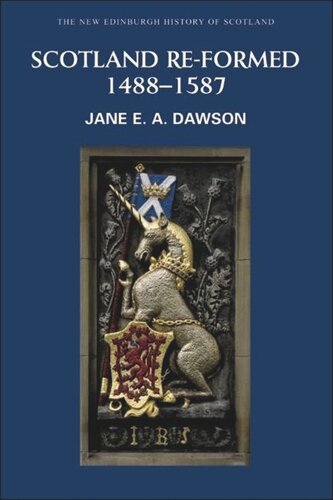

Most ebook files are in PDF format, so you can easily read them using various software such as Foxit Reader or directly on the Google Chrome browser.
Some ebook files are released by publishers in other formats such as .awz, .mobi, .epub, .fb2, etc. You may need to install specific software to read these formats on mobile/PC, such as Calibre.
Please read the tutorial at this link: https://ebookbell.com/faq
We offer FREE conversion to the popular formats you request; however, this may take some time. Therefore, right after payment, please email us, and we will try to provide the service as quickly as possible.
For some exceptional file formats or broken links (if any), please refrain from opening any disputes. Instead, email us first, and we will try to assist within a maximum of 6 hours.
EbookBell Team

5.0
40 reviewsGBS_insertPreviewButtonPopup('ISBN:9780748614554);
From the death of James III to the execution of Mary, Queen of Scots, Jane Dawson tells story of Scotland from the perspective of its regions and of individual Scots, as well as incorporating the view from the royal court. Scotland Re-formed shows how the country was re-formed as the relationship between church and crown changed, with these two institutions converging, merging and diverging, thereby permanently altering the nature of Scottish governance. Society was also transformed, especially by the feuars, new landholders who became the backbone of rural Scotland. The Reformation Crisis of 1559-60 brought the establishment of a Protestant Kirk, an institution influencing the lives of Scots for many centuries, and a diplomatic revolution that discarded the 'auld alliance' and locked Scotland's future into the British Isles.
Although the disappearance of the pre-Reformation church left a patronage deficit with disastrous effects for Scottish music and art, new forms of cultural expression arose that reflected Protestant sensibilities or were transposed to secular settings. Alongside the dramatic events and slow transformations of cultural, social, economic, political and religious life, in 1587 much remained as it had been in 1488, with Scots deeply rooted in their country through their abiding sense of people and place.
Key Features